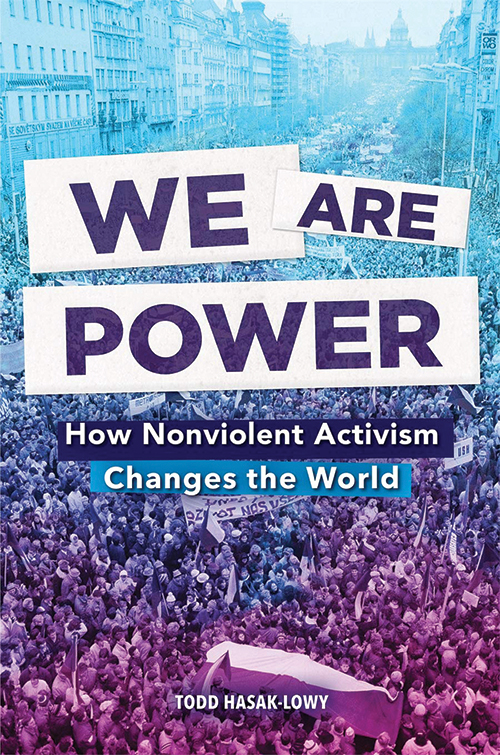
We Are Power: How Nonviolent Activism Changes the World
By Todd Hasak-Lowy. Abrams Books for Young Readers, 2020. 320 pages. $18.99/hardcover; $15.54/eBook. Recommended for ages 10–14.
This book was published at a good time: our country is in a troubling period of unrest and violence. The subtitle, How Nonviolent Activism Changes the World, gives hope to young readers. The author has carefully and deeply researched five nonviolent movements and produced a narrative that makes them accessible and interesting. Although the book is intended for a middle-school audience, most adults could also learn more about these movements and the people who led them. The movements are (1) Gandhi and Indian Independence; (2) Alice Paul and Votes for Women; (3) Martin Luther King Jr. and Project C; (4) César Chávez and the Farmworkers’ Movement; and (5) Václav Havel and the Velvet Revolution. The book concludes with a section celebrating Greta Thunberg and her environmental activism.
Gandhi’s leadership in the Salt March and against the Black Act is clearly presented. The reader learns the meaning of satyagraha, a word that means “holding firmly to truth” and which Gandhi described as the force “born of Truth and Love or nonviolence.” The chapter about Quaker Alice Paul and women’s suffrage was a riveting read for me. I will make sure that my granddaughters read this and talk about it with me. However, the entire book deserves attention. King’s Project C (an unfamiliar term for this reader) is carefully described in great detail. The details of planning large gatherings and civil disobedience add to the appreciation of the Civil Rights Movement. With the unrest surrounding racism in our country today, this chapter was interesting but left me feeling despair about the current situation.
I imagine California Friends are much more familiar with the Farmworkers’ Movement and the work of César Chávez and Dolores Huerta than I was. Again, the backstory of this movement is clearly written and accessible. The 300-mile march from Delano to Sacramento is painfully described. I remember participating in the grape boycott, and it was enlightening to learn about the planning of this successful boycott.
The Velvet Revolution and Václav Havel are less familiar to most people in the United States. This nonviolent movement in the late 1980s resulted in the overthrow of a Communist regime and a return to democracy after roughly 50 years of oppression. Sadly, too many of us have forgotten this significant nonviolent movement in what was then Czechoslovakia.
I recommend this book be included in meeting libraries accompanied by George Lakey’s 2018 book How We Win, or some other book presenting an in-depth understanding of the process of nonviolent action and nonviolence training.
Katie Green is a member of Clearwater (Fla.) Meeting. She is a storyteller, workshop leader, and educator.


